1.4 Why Study the Sociology of Gender
Why is it important to study the sociology of gender? We study so we can see the issues and inequalities around us, explore those issues, and come up with solutions to problems within our society. When we look at the impact one’s identity has on their outcomes, as illustrated in examples about education, access to abortion and healthcare, and the pay gap based on gender, we recognize the importance of this field of sociology. If we know what has happened and is currently happening and find ways to improve it, we can create a more equitable society. Discriminatory policies and practices favorable to a dominant group and unfavorable to other groups are systematically embedded in the existing structure of society in the form of norms. In the case of the sociology of gender, we can look at and dismantle the discrimination against women and those outside of the gender binary.
One reason to study the sociology of gender is to recognize how we fit into the world, including how we are viewed and how we view others through the lens of gender. We may be able to understand why we are drawn to certain professions, for example, based on our gender. Often, females are socialized into professions such as teaching and caregiving, more so than positions of power. We can place ourselves within these norms, standards, and expectations to understand how we fit into the world. In this way, we might discover how we do not fit the standard gendered norms, or we might learn other concepts around gender.
1.4.1 Asking the Bigger Questions
We can also explore what we see and experience to answer some of the bigger sociological questions. Imagine you have a friend, colleague, or peer that comes out as transgender and is then ostracized by their family, perhaps bullied at school, or loses a job. We can then ask the big question: Why? Why did that one piece of their identity cause so much harm to their lived experience? What we will find is that there are mass cultural and sociological factors at play through the lens of gender.
One of those factors is institutionalized discrimination, the exclusion of those who do not conform to established norms in our society that is built into the institutions of education, work, politics, economy, and so on.. When an individual does not fit into established binary gender categories, ideals of masculine/feminine or male/female, the problem is with society’s institutionalized norms, values, roles, and expectations rather than the individual themselves.
1.4.2 Patterns that Shape our Experiences
What sociology of gender adds to our understanding of gender is the validation of patterns and experiences we see daily through scientific research. As discussed, sociological research follows the scientific method, so research on issues related to gender, sexuality, and intersectionality has all been completed in ways that are validated by not only the method but by other professionals in the field.
When we discuss the wage gap, it is not just an idea or a theory. Sociologists, economists, and others have clear data that compares what men make in the same fields and positions to women, as well as data on who is hired for which jobs at higher rates. They also record the experiences of individuals and groups, through qualitative data methods, and compare and contrast those experiences to explain the more nuanced patterns of the wage gap story. This combined research (numerical statistical data and the commonalities in stories) provides evidence of sociological patterns.
1.4.3 Working for Change and Future Activism
When we connect research with experiences in our everyday lives and the lives of those around us, we start to see patterns and shared similarities. When a woman notices that her male colleagues have advanced in position and pay, she is not alone in her experience. When a black man is continuously passed over for interviews based on his name, he is also not alone in his struggle. When LGBTQIA+ individuals face microaggressions and discrimination within the workforce, they are also not alone.
Recognizing these patterns shows us that we can work together to create a healthier, more positive, and equitable space in the world. For those who face a social stigma like having a criminal record, when they can see others out there facing similar struggles, they can use that shared experience and power of numbers to enact change. We have seen this in the power of the vote. When groups work together and rally for positive change, they can make a difference. Small portions of society with more political power sometimes create policies and laws that disproportionately harm disadvantaged populations. Activists then rally around these policies to change them or ensure they fail at the ballot box.
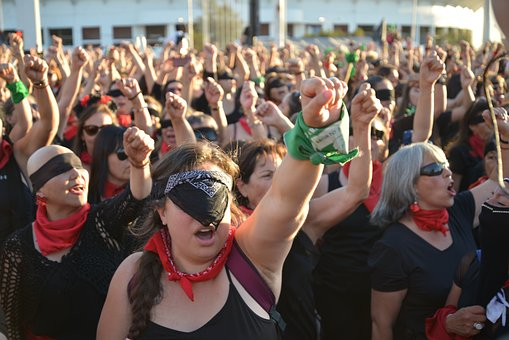
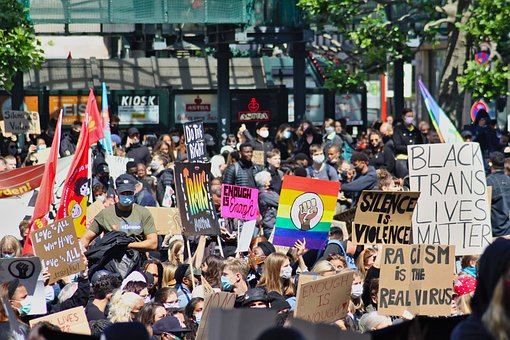

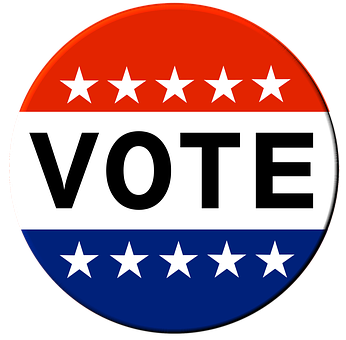
Figure 1.11 Protests from the Women’s March, Black Lives Matter and Gun Violence elicit social change and are based on rights, equity, safety. Voting gives citizens a voice in the future.
The Human Rights Campaign, Mom’s Demand, Black Lives Matter, and the ACLU are all activist groups with varied missions, but they all approach and support equity, access, and equal rights. Small movements and actions can lead to big changes when we work together.
1.4.4 Activity: Applying and Analyzing Gender Theory
Example 1
Use any access you have to look at how gender is portrayed in the media such as these two images (figures 1.3 and 1.4):
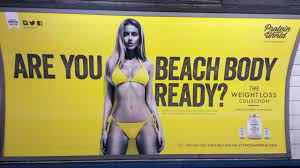
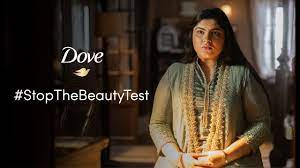
Figure 1.3. Advertisement for a ‘beach body with an idealized female image, we see a hypersexualization and strong social norms of body and beauty image.
Figure 1.4. Dove advertisement with #StopTheBeautyTest with a person who does not fit into a traditional feminine norms of body type and beauty. They are not white, not sexualized, and does not look like the traditional model.
*Within these two images we can also see the “norms of gender” of what is beauty, which would be a GREAT addition to this. Although the Dove ad is attempting to change the narrative, is it still harmful? Or does it fit the positive view of gender?
Example 2

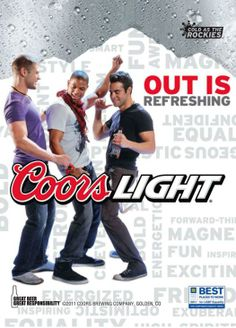
Figure 1.5. Absolut Vodka ad with group of mostly men cheering at sports game, with a proposal from Mark to Steve in the background, supposedly in an image to support marriage equality, while maintaining masculine image ideals.
Figure 1.6. Coors Light ad that says ‘Out is refreshing’ and has three assumed men dancing together.
Figures 1.5 and 1.6 show gay men (assummed) One is a normal marriage proposal at a sports game, the other is drinking and three men dancing. The hypersexualization of gay individuals is a continued negative misconception and stereotype, so I would say this perpetuates that, although it is “inclusive” they are also missing BIPOC individuals and enforce hegemonic masculinity.
Now it is your turn—
STEP 1: Search magazines, websites, newspapers, blogs, or other media to find advertisements. Search for advertisements with people in them that are related in some way to sex, gender, or sexuality.
STEP 2: Find two different advertisements—one that portrays a “negative” or stereotypical view on gender or sexuality, and then one that portrays a “positive” view on gender or sexuality.
STEP 3: Answer the following questions about BOTH advertisements
- How does this advertisement portray gender, sex, or sexuality? What is the ad intentionally trying to sell? What unintentional messages might it also be sending?
- Who is the intended audience of this advertisement? Are there any stereotypes in this ad? How do you think this ad is received? Do you think it is effective? Explain.
- If you could make adjustments or changes to this advertisement, what would you do, and why?
STEP 4: Describe your own personal views on gender in advertising.
- Do you think advertising on the whole is becoming less stereotyped, or more so? Explain.
- How have you seen examples of this in your own life?
- What steps, if any, do you think should be taken to improve future advertisements?
1.4.5 Licenses and Attributions for Why Study Sociology of Gender
“Why Study Sociology of Gender” by Heidi Esbensen is licensed under CC BY 4.0.
“Activity: Applying and Analyzing Gender Theory” is adapted from “Gender and Advertising” by Lumen Learning in Introduction to Sociology, which is licensed under CC BY 4.0. Modifications: expanded and added images.
“Sociology of Gender” is partially from “The Legalese of Sex and Gender”/ “12.1 Sex, Gender, Identity, and Expression” by Tonja R. Conerly, Kathleen Holmes, Asha Lal Tamang in Openstax Sociology 3e, which is licensed under CC BY 4.0.
Patriarchy paragraph in “Origins (soc of women)” is partially from “Social Construction of Gender” by Jennifer Puentes in Introduction to Sociology [unpublished author’s manuscript], which is licensed under CC BY 4.0.
“Origins (soc of women)” is partially from “Beyond the Binary,” originally from “12.1 Sex, Gender, Identity, and Expression” by Tonja R. Conerly, Kathleen Holmes, Asha Lal Tamang in Openstax Sociology 3e, which is licensed under CC BY 4.0. Edited for clarity, consistency, and brevity by Jennifer Puentes.
“Origins (soc of women)” is partially from “Gender and Sexuality” by Carol C. Mukhopadhyay, Tami Blumenfield, Susan Harper, and Abby Gondek in Perspectives: An Open Introduction to Cultural Anthropology (2nd ed.), which is licensed under CC BY-NC 4.0.
Intersectionality definition and paragraph is from “The Social Construction of Difference” by Elizabeth B. Pearce in Contemporary Families, which is licensed under CC BY-NC-SA 4.0.
Hegemony and Institutional discrimination definition are from the Open Education Sociology Dictionary edited by Kenton Bell, which is licensed under CC BY-SA 4.0.
Figure 1.3. Protein World Tube Advertisement photographed by Catherine Wylie/PA is included under fair use.
Figure 1.4. Screenshot from “Dove | #StopTheBeautyTest (Hindi)” (c) Dove India is included under fair use.
Figure 1.5. “Stadium | In an Absolut World” (c) Absolut Vodka is included under fair use.
Figure 1.6. Coors Light advertisement (c) Coors Brewing Company is included under fair use.

